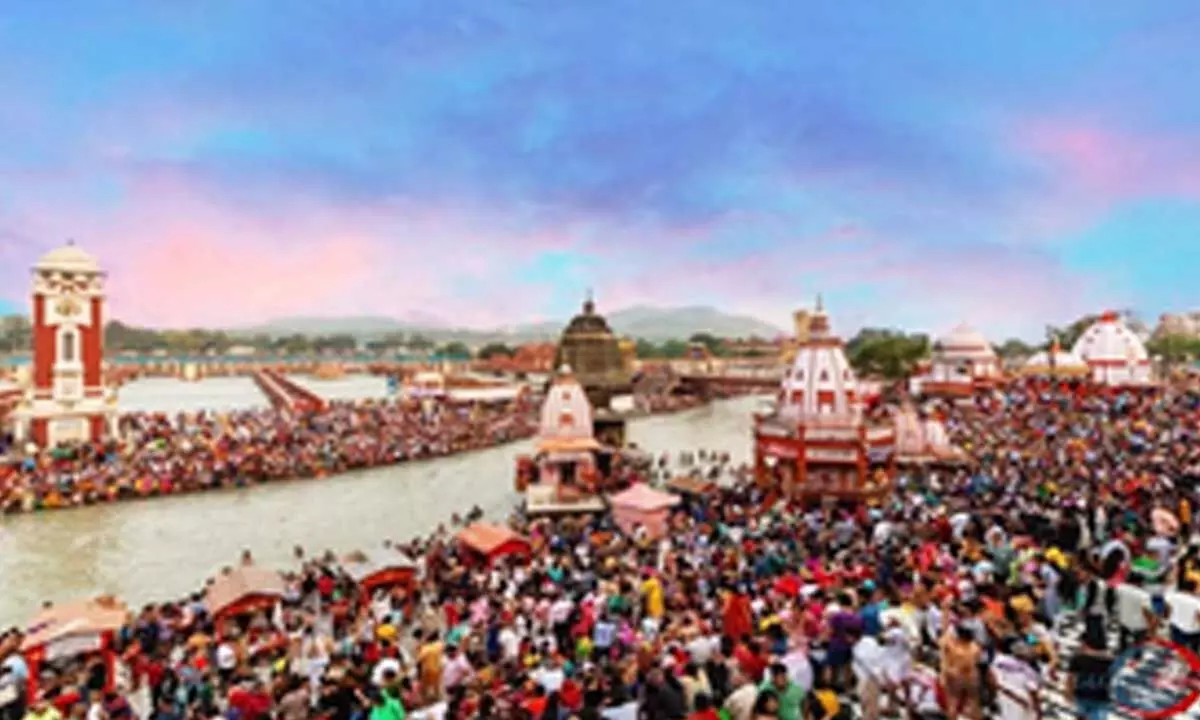Live
- Police arrests couple, recovers 200 grams gold
- OYO Implements New Check-in Policy Restricting Unmarried Couples
- Ethiopia earns over $216 million from horticulture exports
- NIA raids nine locations in Jharkhand, finds evidence in CPI(Maoist) activities case
- Hoax bomb threats target TN secretariat, DGP office; police search for email sender
- Union Budget 2025-26 should continue to prioritise job creation: CII
- Delhi emerging as global model for sustainable public transport: CM Atishi on RRTS
- Four killed as vehicle falls into gorge in J&K’s Kishtwar
- CM Revanth Reddy Launches Rajiv Gandhi Civils Abhayahastam Program at Praja Bhavan
- Nara Lokesh emphasizes efforts to attract investment to Vizag
Just In
World set to witness largest spiritual confluence


The dawn of the New Year signals the final countdown for the world’s biggest spiritual spectacle, Mahakumbh 2025, at Prayagraj in Uttar Pradesh, which would begin on January 13
The dawn of the New Year signals the final countdown for the world’s biggest spiritual spectacle, Mahakumbh 2025, at Prayagraj in Uttar Pradesh, which would begin on January 13. It is going to be a mesmerising visual delight as 400 million pilgrims would converge for the mega congregation and will take a holy dip at the Sangam in a span of 45 days which would be the grandest event of the New Year.
The Uttar Pradesh government needs to be appreciated for its meticulous planning and execution. The administration has been striving hard to ensure that the religious-cum-cultural event on the earth breaks all the past records. The spiritual gurus say it is going to be a dive into the mystical journey of sadhus. It is going to be a convergence of faith, culture and technology.
It provides a platform for individuals to reconnect with their inner selves, seek divine intervention, and participate in a tradition that has been passed down through centuries. The 2025 Maha Kumbh Mela, with its anticipated scale and participation, promises to be a spiritually uplifting experience, reaffirming the timeless importance of this ancient festival in the modern world.
One of the most striking features of Mahakumbh is the congregation of sadhus, gurus, and spiritual leaders who come out of seclusion and interact with the masses, offering spiritual guidance, conducting rituals, and leading processions to the holy rivers. Hence, the spiritual gurus say that the devotees should greet all people whether they are common devotees or ascetics with folded hands since one does not know in which form and in whom the Gods are present. Well, the atheists may laugh at it but even from health point of view it is better to greet people with folded hands.
According to Hindu mythology and tradition, the event is believed to have originated from the ancient story of the Samudra Manthan, or the churning of the ocean of milk, where gods and demons fought for the pot of nectar (amrita) that grants immortality. According to legend, drops of this divine nectar fell at four locations in India—Prayagraj, Haridwar, Ujjain, and Nashik—making them the sacred sites for the Kumbh Mela.
Even if one looks at it from purely tourism angle, Sangam city today has turned into a glorious religious city. One could see the birth of a new city called Mahakumbh Nagar. It has become a symbol of success and proved that if the state government and administration work with dedication and coordination a new city can be created in the shortest possible time and it can prove to be game changer for any state.
Roads are adorned with colourful lights, LED-based insignias depicting Hindu religious themes, and murals that illustrate stories from the Mahabharata and the lives of great sages line the streets. The grand murals, spanning over 15 lakh square feet, create an almost magical atmosphere for those traversing the city, adding to the spiritual aura of the event. “If you wish to see India in one place, Mahakumbh Mela is the destination. We are working to ensure an unparalleled experience for every traveller,” says the Chief Minister Yogi Adityanath. The ultra-modern tent city with villas, Maharaja tents, deluxe accommodations, Swiss cottages, and thoughtfully planned amenities, helicopter rides and water sports will enhance the pilgrim experience, while sustainable practices remain at the core of the infrastructure.
The event that symbolises India’s ‘Vasudhaiva Kutumbakam’ philosophy—the world is one family.

© 2024 Hyderabad Media House Limited/The Hans India. All rights reserved. Powered by hocalwire.com






